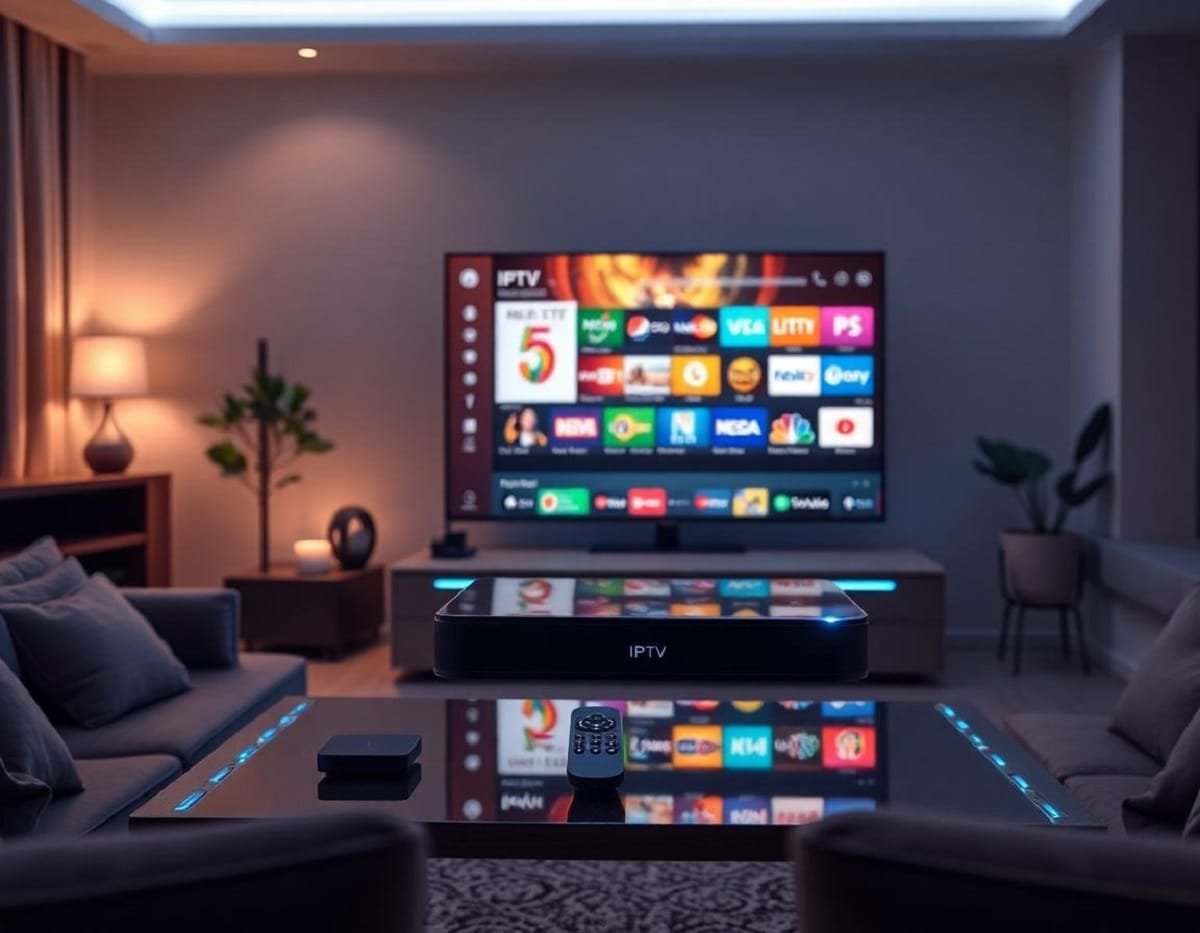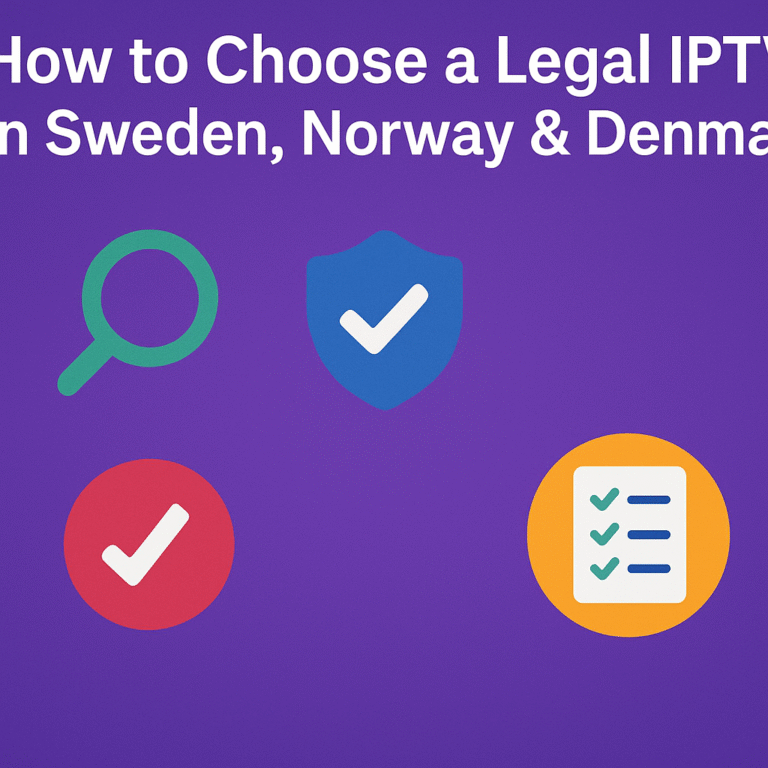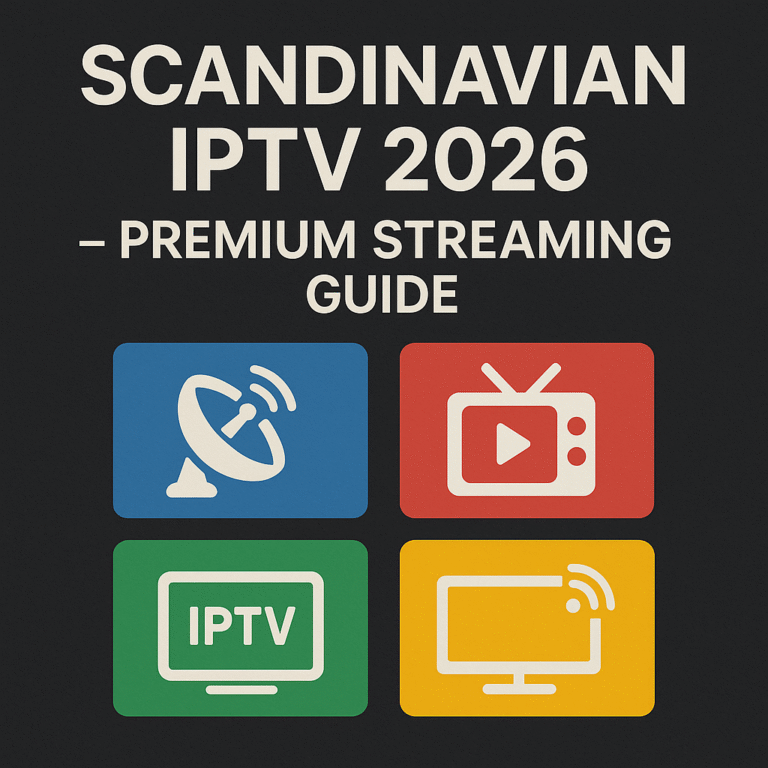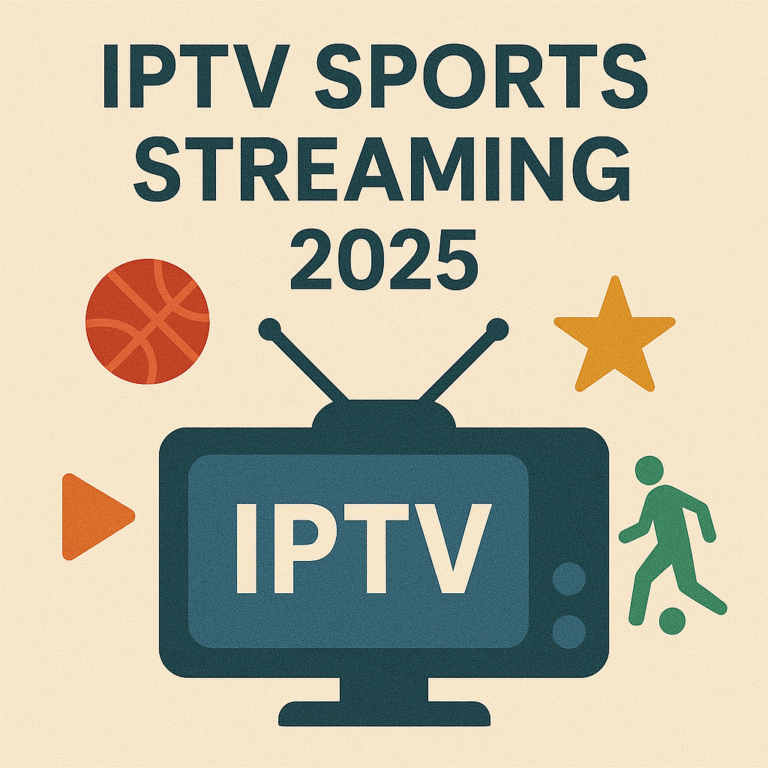Best IPTV Services Compared [July 2025 Update]

IPTV Services Compared
Streaming TV has changed a lot lately and IPTV sits at the center of this shift. IPTV, or Internet Protocol Television, lets you watch live channels, movies, and shows through your internet connection instead of cable or satellite. People love IPTV because it’s flexible, offers more options, and usually costs less than traditional TV.
With new services launching and old favorites updating features, July 2025 is the perfect time to compare the top choices. This post sorts through the latest options, breaking down what’s new, what’s popular, and what matters most. If you’re searching for the best IPTV service this year, this guide covers what you need to know before you decide.
What Is IPTV? How It Differs from Cable, Satellite, and Streaming Services
The way we watch TV keeps changing with each new tech jump. IPTV stands for Internet Protocol Television, and it’s at the center of this shift, offering a completely different experience than what many of us grew up with. To really get why IPTV has become so popular, it’s important to look at what makes it unique and how it compares to cable, satellite, and common streaming services.
 Photo by Andrey Matveev
Photo by Andrey Matveev
IPTV: The Basics
IPTV sends TV and video over your internet connection using Internet Protocol (IP), instead of through cables or a satellite dish. Instead of flipping through channels on your cable box, you stream live TV, recorded shows, or on-demand movies right on your smart TV, streaming box, tablet, or even your phone.
- How IPTV works: Content is delivered in real-time through your internet connection, more like how websites work. When you select a show or channel, it’s streamed straight to your device instantly.
- Types of IPTV: There are three main types:
- Live TV (watching TV as it happens)
- Video on Demand (VOD) (playing movies, shows, or events anytime)
- Time-shifted TV (pausing, rewinding, or replaying live broadcasts)
- Device flexibility: Virtually any device with a screen and internet access can run IPTV apps or software, making it perfect for busy families or people always on the go.
For an in-depth breakdown of the core tech and setups, check out this IPTV overview.
How Cable and Satellite TV Compare
Traditional cable and satellite TV rely on physical infrastructure. Cable uses coaxial or fiber-optic lines, while satellite TV bounces signals down from satellites in orbit to your home’s dish.
- Consistent channel packages: With cable or satellite, your channels and content are determined by your provider and tier level.
- Hardware lock-in: Both require special receivers, boxes, and sometimes extra wiring. You can’t usually take your service with you.
- Quality: Satellite can suffer if the weather is poor, while cable can lag if your neighborhood is busy.
- Fewer interactive features: Most cable and satellite setups don’t let you pause or rewind live channels without paying for DVR add-ons.
For more about the day-to-day differences between IPTV, satellite, and cable, check out this easy comparison guide from XtreamHD.
How IPTV Stacks Up Against Streaming Services
Streaming services like Netflix and Disney+ (often called “OTT” services, short for Over The Top) also use the internet for delivery. But there are some important differences:
- Channel-based vs. App-based: IPTV can give you hundreds of live TV channels just like cable, but delivered over the web. Most streaming services don’t offer standard TV channels.
- Content selection: With IPTV, you get live international channels, specialty sports, and niche offerings you’ll rarely find on big-name streamers.
- Customization: You can often add or drop channel packs more easily with IPTV.
- Real-time broadcasts: IPTV is great for watching sports, news, or events as they happen. Streaming services are mostly on-demand libraries.
- App availability: Both IPTV and streaming services work on all sorts of devices, but IPTV apps often support more content formats and networks.
For more on the differences, see a detailed side-by-side at Infomir’s guide to IPTV vs. streaming.
Quick Comparison Table
Here’s a simple breakdown to help you see where each TV service shines:
| Feature | IPTV | Cable | Satellite | Streaming Services |
|---|---|---|---|---|
| Delivers Live Channels? | Yes | Yes | Yes | Rarely |
| On-Demand Content? | Yes | Sometimes | Sometimes | Yes |
| Device Flexibility | High | Low | Low | High |
| Requires Set-Top Box? | Sometimes (not always) | Yes | Yes | No |
| Needs Internet? | Yes | No | No | Yes |
| Weather Issues? | No | No | Sometimes | No |
| Interactive Features? | High | Medium (DVR only) | Medium (DVR only) | High |
Understanding these differences can help you decide if IPTV fits your needs this year. Whether you want to ditch the cable box or just add more streaming power, knowing how IPTV works is key. For extra background, the team at Muvi covers IPTV tech and devices.
Key Criteria for Comparing IPTV Services in 2025
Choosing an IPTV provider in 2025 means looking past flashy ads and really sizing up the details that matter most. Not every service delivers the mix of live channels, on-demand content, device support, and legal peace of mind you want for your family or lifestyle. Before you decide, make sure you weigh these key factors to get the streaming experience you expect.
Content Library: Sports, Movies, Local Channels
A strong content library sets a good IPTV service apart from the rest. People tune into IPTV for the wide selection offered, from the latest live sports to blockbuster films, global news, and must-have local channels.
- Channel variety: The best services cover sports, movies, kids’ shows, documentaries, and more—so everyone in the home finds something to watch.
- Local & regional channels: Access to your area’s news, weather, and events through local channel support makes a big difference for many people.
- On-demand selection: Reliable providers refresh their movie and series libraries, allowing instant access to fresh entertainment as soon as it’s released.
For an inside look at the best content variety this year, check out the best IPTV services ranked for June 2025.
Streaming Quality, Speed, and Reliability
Streaming quality can turn a night in front of the TV into a joy or a nightmare. Look for services with consistent HD or 4K support across popular channels, and make sure buffering isn’t a dealbreaker.
- Buffer-free playback: Good IPTV should have minimal lag, even during live sports or movie premieres.
- High definition & 4K: Leading options offer HD by default, with ultra-high resolution (4K and up) where possible.
- Uptime: The best providers maintain solid service availability, keeping interruptions to a minimum.
Recent user reports highlight IPTV services in 2025 with solid streams, no buffering, and high 4K quality. If you’re sensitive to hiccups or just love watching sports in crisp detail, quality and speed matter most.
Pricing Models and Value for Money
IPTV pricing can get confusing, thanks to subscription tiers, bundle deals, trial offers, and sometimes hidden fees. Getting true value means understanding exactly what you’re paying for.
- Monthly vs. yearly vs. one-time payments: Some services bill by the month, while others offer savings for a longer upfront commitment.
- Bundled features: Premium packages might include extras like extra device streams, on-demand bundles, or better support.
- Hidden costs: Watch out for activation fees, device add-on requirements, or “processing” charges that can add up.
- Trial options: A free or low-cost trial is often a good sign—they let you see the experience for yourself before you commit.
For a direct comparison of current pricing and what’s included, see this guide on IPTV subscription options and pricing models for 2025.
Supported Devices and App Usability
The right IPTV service works everywhere you do, from your smart TV to your phone and everything in between. But the number of supported devices is just the start—how easy and fast the apps are to use matters just as much.
 Photo by Andrey Matveev
Photo by Andrey Matveev
- Device compatibility: Top options support popular smart TVs, streaming sticks (like Fire TV and Roku), computers, tablets, and phones.
- App stability: Look for apps that load quickly, have easy navigation, and don’t crash during heavy use.
- Multi-device support: If you want to stream on more than one screen at a time, check device limits and whether the provider makes it simple to add more.
- User interface: Clean menus, simple channel guides, and helpful search functions make a big difference in day-to-day use.
A helpful overview of device compatibility and user experience is covered in this June 2025 best IPTV devices and usability roundup.
Legal Standing and Risk Assessment
Not every IPTV provider plays by the rules. Sticking with legal, licensed services protects your privacy (and your wallet) while giving you confidence that your streams won’t suddenly disappear due to copyright complaints.
- Copyright protection: Legitimate providers secure the rights to broadcast live TV and on-demand shows, which means your streams stay up and running.
- Transparency: Legal services display clear policies and licensing info, and they’re easy to verify online.
- Risks of gray-market services: Unlicensed platforms may save you money in the short term, but streams can disappear, customer support is often poor, and there’s always a risk of legal trouble or malware.
If you want peace of mind with your streaming setup, check out this independent review of top legal IPTV providers for 2025. Proper research up front can safeguard both your tech and your wallet.
Top IPTV Providers in July 2025: In-Depth Comparison
Choosing an IPTV service today is about more than just price. In July 2025, the top providers set themselves apart with better features, reliable performance, and technology updates aimed right at everyday viewers. Below, I break down three of the best performers—each with a strong reputation—and also spotlight new or under-the-radar options that are turning heads this year.
Provider 1: Features, Pros, and Cons
 Photo by Gabriel Freytez
Photo by Gabriel Freytez
One of the most popular choices on nearly every list is XtremeHD IPTV. Known for its reach and strong balance of value and reliability, XtremeHD appeals to both new users and IPTV veterans.
Key Features:
- Over 20,000 live channels from around the world, including sports and regional content.
- Full movie and TV show library, refreshed weekly with trending titles.
- Supports 4K and Ultra HD on major live events and popular networks.
- Compatible across smart TVs, Android, iOS, tablets, Firestick, and MAG devices.
Pros:
- Consistent streaming quality with 24/7 uptime.
- Offers a full EPG (electronic program guide) for easy browsing.
- Multi-connection packages suit families or power users.
- Well-reviewed customer support with fast chat response.
Cons:
- Short free trial period—just enough to try, but not long for a deep test.
- Some niche international channels may require add-ons.
- Slightly higher starting price than off-brand services.
If you want a deeper dive into features and deals for this service, visit this complete XtremeHD IPTV overview.
Provider 2: Features, Pros, and Cons
Layerseven TV has emerged as a favorite this year for those who want simple setup and a clean, friendly app. If stability and fuss-free streaming rank high on your wish list, this provider stands out.
Key Features:
- Channels from North America, the UK, and Europe with major sports, news, and kids content.
- Minimalist app UI, fast channel navigation, and integrated search.
- Cloud-based DVR lets you record and store live events for later.
Pros:
- Works seamlessly on Fire TV and Roku devices with easy installation.
- Frequently updated channel list, including seasonal sports events.
- Responsive customer support and knowledge base.
Cons:
- Channel lineup not as broad as some mega providers.
- Occasional wait times for email support during peak periods.
- DVR function can have limits based on plan.
For current ratings and feature comparisons, see the updated review on best IPTV services for 2025 from The IPTV Guide.
Provider 3: Features, Pros, and Cons
NEXOTT.NET steps into the spotlight in 2025 as a robust, tech-forward solution. Users highlight its smooth 8K streaming and fast response times, making it a choice for viewers with top-spec home setups.
Key Features:
- Supports 8K, 4K, and HD across many top channels.
- Intuitive multi-device dashboard, so you can switch devices without logging out.
- End-to-end encryption for enhanced privacy.
Pros:
- Unmatched picture quality for sports, gaming, and movies.
- Flexible subscription choices: monthly, quarterly, and yearly plans.
- Regular app updates keep bugs and glitches minimal.
Cons:
- 8K requires very fast internet—overkill if you mostly watch on mobile.
- Selection of older shows/movies is smaller than competitors.
- Slightly more complex setup for new users.
For details on why NEXOTT.NET shines for video quality, see this expert feature test and in-depth review.
Emerging or Niche Providers to Watch in 2025
While big names get the spotlight, a few smaller or boutique providers deserve your attention this year.
- CatchON TV: Making noise with budget-friendly plans, ideal for students or second homes. Reviewers love the focus on regional sports and community news.
- ITTechBasics IPTV: Stands out for tech support, walk-through setup, and smart home compatibility—perfect for anyone who values direct contact.
- LemoTV: Builds its offering around exclusive content packs, international movie nights, and kids’ learning channels.
These rising stars aim to fill gaps left by mainstream providers, whether that means focused content, hands-on help, or wallet-friendly plans. If trying something new excites you, keep your eyes on these alternatives as the year goes on.
You can browse more detailed user feedback and see how real subscribers rate these emerging services at Reddit’s 2025 IPTV reviews and experience thread.
User Experience and Real-World Performance Data
When picking an IPTV provider, a lot rides on how it actually feels to use every day—not just how it looks on paper. Fast channel changes, clear picture quality, real customer support, and honest speed results all play huge roles in your satisfaction. To help you sort through the claims, I rounded up user survey insights, latest speed test data, and customer support ratings from real people in 2025.
What Recent User Surveys Reveal
Surveys from IPTV reviewers and independent forums highlight what users love—and what can drive them crazy. Feedback in 2025 shows some clear themes:
- Uptime really matters: Nearly 85% of surveyed viewers said that stable, uninterrupted streaming is more important than fancy features. Drops or outages lose trust quickly.
- Channel load speed: Most users want channels to load in under five seconds. Anything longer, especially on live sports or news, was called annoying by three out of four respondents.
- User interfaces: Clean, easy-to-navigate apps set providers apart. Confusing menus or laggy guides get flagged in negative reviews far more than missing channel packs.
- Personalization: Users prefer services with a simple favorites list, parental controls, and quick continuing watching options.
Recent user reports highlight these trends across top services like XtremeHD and Layerseven TV. For more detailed user experience trends in the market, see the latest findings in the IPTV Market Comprehensive Market Study.
Speed Test Data: Streaming Performance in Action
Streaming speed tests give a direct window into how providers perform with real homes and devices. Updated tests from June and July 2025 show key points for the best IPTV options:
- High-Definition & 4K support: Leading providers, including NEXOTT.NET and XtremeHD, consistently stream HD and 4K channels without stuttering—provided your internet connection is at least 25 Mbps or higher.
- Buffering frequency: Reports show that top-tier providers buffer less than 3% of streams, while budget services sometimes buffer as much as 12-15%, especially during prime time or big live events.
- Channel switch timing: The fastest IPTV apps now change channels in one to two seconds, keeping the experience as snappy as flipping a regular TV remote.
If you want deep technical insight, you can compare up-to-date performance data with the streaming test breakdown at Guru99’s best IPTV service providers and real-world results from Troypoint’s 2025 roundup.
Customer Support and Real Feedback
How fast a team responds when things go wrong matters. Customers in 2025 praised services that blend quick live chat with deep knowledge bases. Common points from public user forums and survey responses:
- Support wait times: XtremeHD and Layerseven TV typically respond via chat in under two minutes during regular hours. Email support on less popular services can lag from 1-24 hours.
- Problem resolution rates: The best-rated providers solve over 90% of user-reported problems on the first contact.
- Guides & resources: Users favor IPTV apps with built-in FAQs, video walkthroughs, and easy-to-follow troubleshooting. Providers that lack these resources get lower marks, even if live support is solid.
If you want honest, unfiltered reviews from people using these providers daily, check out user posts like this Reddit 2025 IPTV real experience thread, as well as in-depth reveal posts at Amplitude Community.
At-a-Glance: User Experience Metrics
Here are the top factors cited by real IPTV users in 2025, and how leading providers stack up:
- Uptime rate: 99.5%+ for XtremeHD, Layerseven TV, and NEXOTT.NET
- Channel load speed: 1-3 seconds on average
- HD/4K consistency: 90%+ of streams at max available quality
- Support rating: 4.5/5 stars across review sites for leading names
 Photo by VAZHNIK
Photo by VAZHNIK
User experience and real-world performance are what turn an IPTV subscription from a headache into a staple in your living room. Reliable data and honest feedback can make the difference between love and regret when picking your service this year.
Choosing the Best IPTV Service for Your Needs in 2025
With dozens of IPTV services available this year, picking the right one can feel overwhelming. Not every provider is a fit for everyone—what works for a sports fanatic won’t always work for a family who wants easy kids’ programming, or for a movie buff who chases the latest releases. Below, you’ll find practical advice built around common viewer needs, so you can match the best IPTV service to your own habits and preferences.
 Photo by Pixabay
Photo by Pixabay
For Sports Fans: Never Miss a Game
If you live for live sports—whether it’s football, soccer, basketball, or fighting events—you’re looking for instant access, stable streams, and options for regional and global coverage. Choose an IPTV service that promises:
- Dedicated sports packages and add-ons for major leagues and tournaments
- Reliable HD or 4K quality, especially during peak match times
- Minimal buffering, even during live events
- Catch-up TV features so you can replay games you missed
Some of the top-rated services for sports lovers include providers like Trimixtriangles and others listed on industry forums. To see top picks ranked by actual fans, visit this insightful Reddit post on the best IPTV options for sports viewers.
For Movie Buffs and Binge Watchers
If you’re most at home exploring new movies and full box sets, look for IPTV subscriptions that shine in these areas:
- Broad on-demand movie catalogues, including new releases and classics
- High-definition streams with options for 4K playback
- Smart interface with watchlists and “continue watching” features
- Regularly updated library with international and niche films
Some providers focus on cinema buffs and frequently update their title lists. Not sure which fits? This GeeksforGeeks review of IPTV services gives a breakdown of which offer the best video on demand and user-friendly sorting for movies and shows.
For Families: Kid-Safe Channels and Easy Streaming
Families benefit most from services that are easy to use, safe for kids, and work across multiple devices. Key features to focus on:
- Parental controls and safe browsing options for younger viewers
- Channel packs that include cartoons, educational shows, and local networks
- Multi-device streaming, so siblings aren’t fighting over screens
- Simple app interfaces with helpful support resources
Providers like Meilleuriptvfr earn points with families for device flexibility and clear content separation. To see which IPTV services are safest and most flexible for homes, check out the updated FirestickTricks guide.
For Multi-Device Households
Living in a household where everyone has their own device? The best IPTV services give you:
- Multiple simultaneous streams on one account
- Apps for smart TVs, tablets, phones, Rokus, and other streaming boxes
- Synchronization so you can start watching on one screen and finish on another
Strongiptv, highlighted in recent user lists, is a known favorite for its emphasis on easy, reliable streaming across all devices.
For Bargain Hunters: Get the Most for Less
Trying to keep costs in check without giving up quality? Look for providers with:
- Flexible monthly, quarterly, or annual payment plans
- No hidden fees or forced hardware purchases
- Decent channel variety, even on base tiers
You can compare affordable picks and value-for-money choices via independent reviews, so you know you’re only paying for what you actually watch.
Quick Checklist Before You Commit
To simplify your search, here’s what to review before subscribing:
- Check channel lists for your must-haves (sports, local, kids, premium)
- Read independent user reviews for buffering and support feedback
- Make sure the service supports all the devices your household uses
- See if there’s a free trial or demo option
- Look for transparency in pricing and terms
The right IPTV provider is out there—it just depends on how you watch TV and what matters most. Use your specific habits as the north star in your comparison process and you’ll land on a service that’s practically custom-fit for you.
Conclusion
IPTV in July 2025 stands out for choice, convenience, and quality. Top services combine stable streaming, broad channel lineups, and flexible apps that fit every screen in your home. New tech like smarter recommendations and early 8K support keep raising the bar for live and on-demand TV. Today’s top providers are making it easier to enjoy sports, movies, and family shows with less hassle and clearer value.
The IPTV scene changes fast as providers add smarter features and improve streaming tech. Bookmark this guide and check back soon—new updates, reviews, and features are always on the way. Thanks for reading, and feel free to share what matters most to you when picking an IPTV service.






